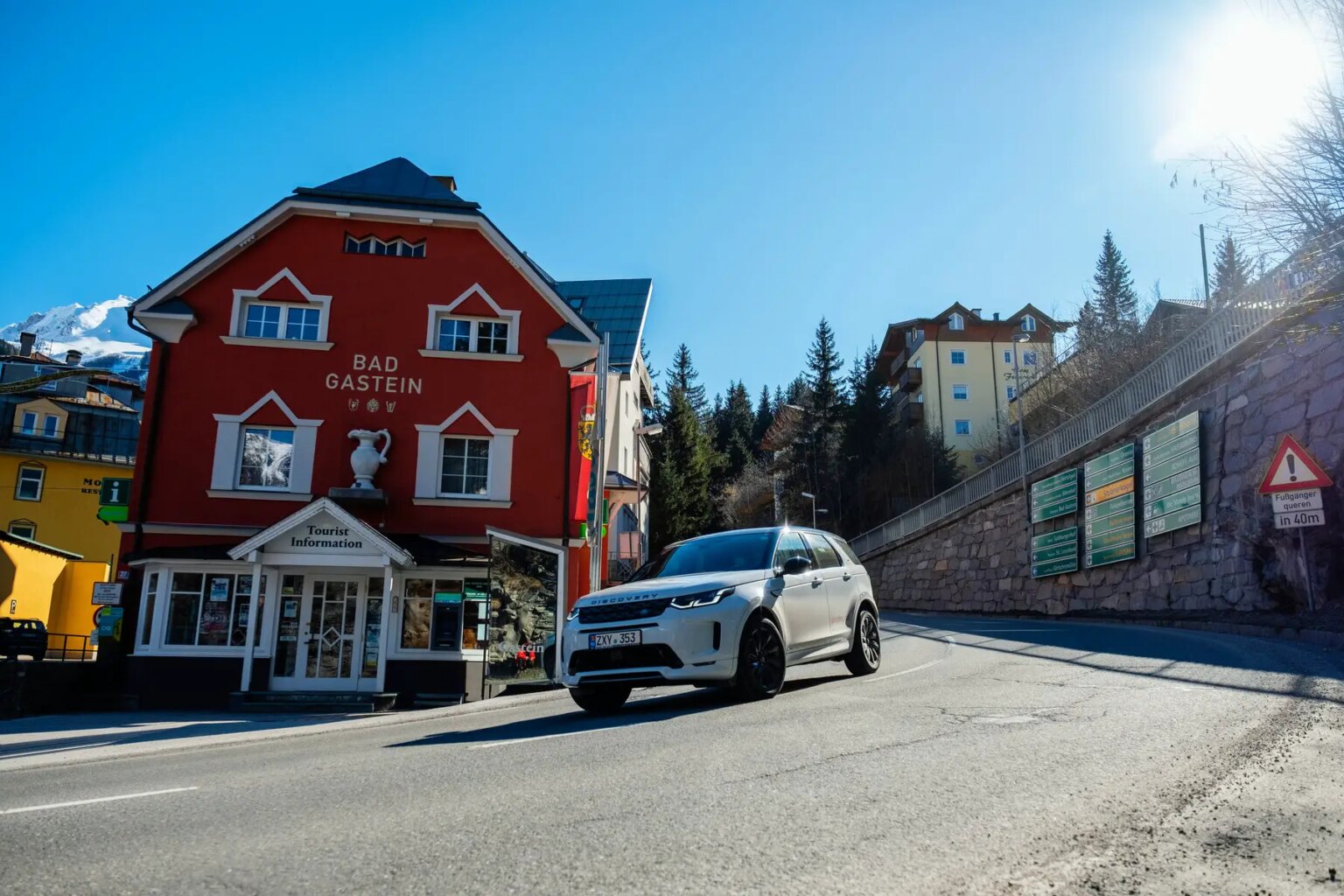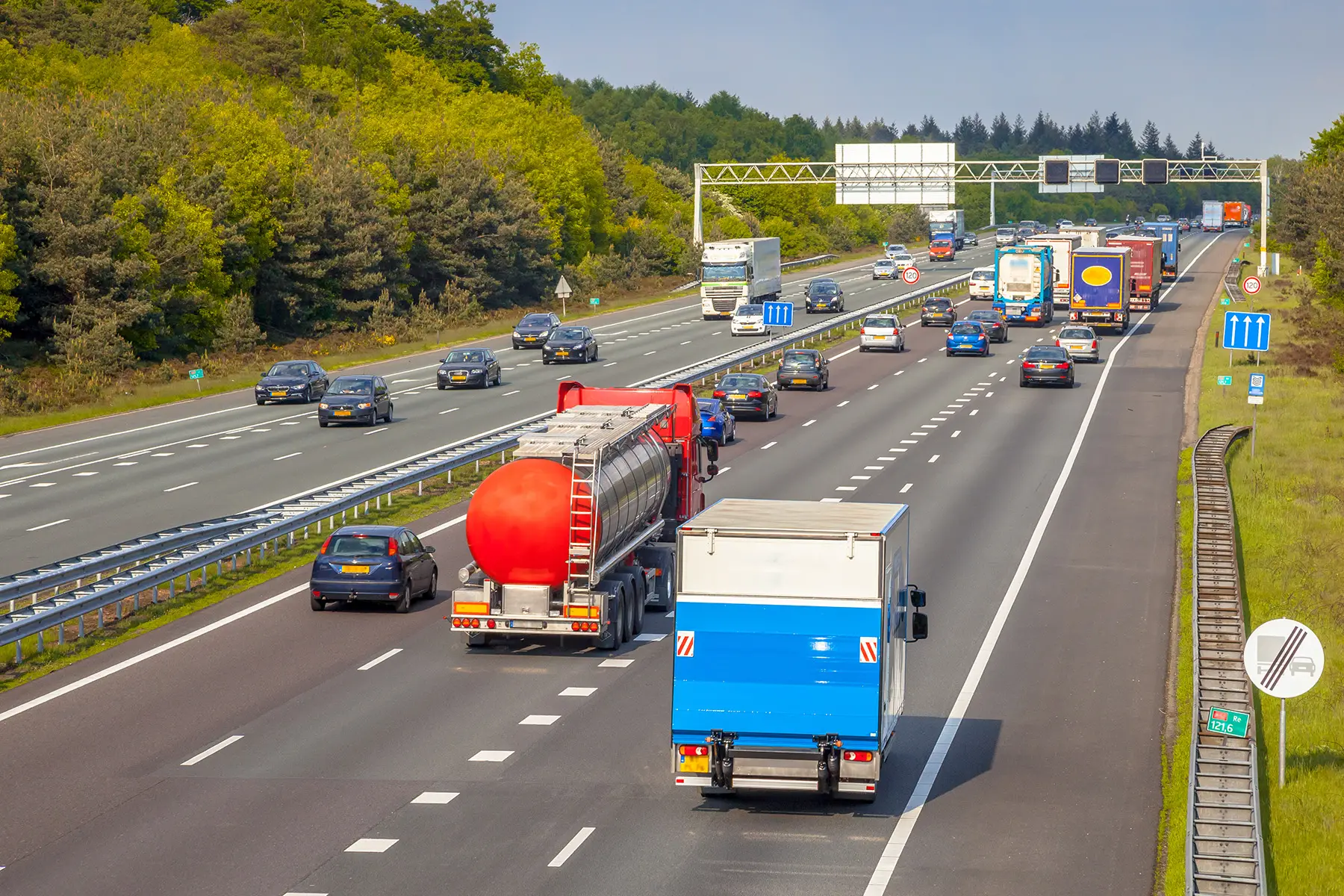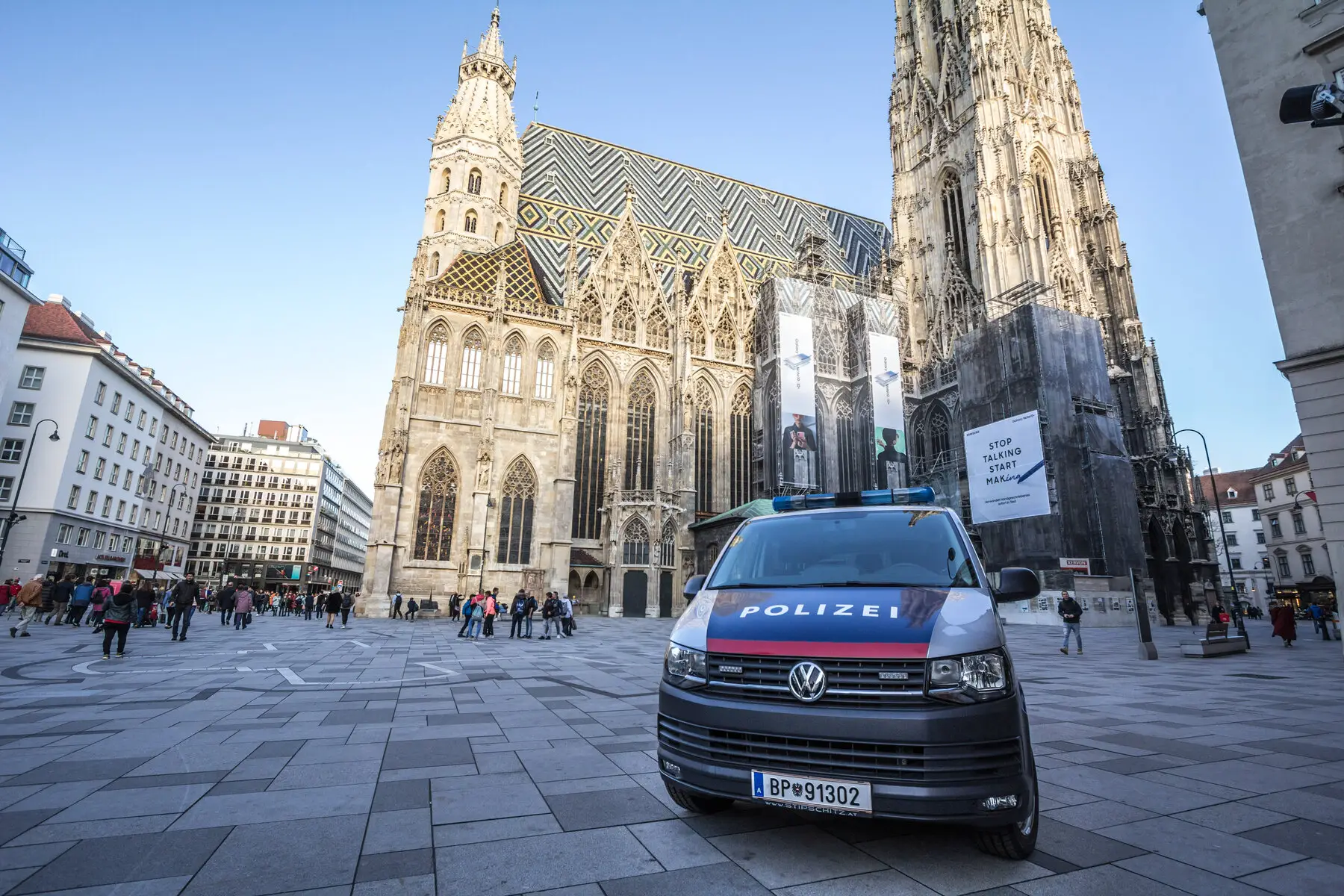If you are from Europe, then driving in Austria will be very similar to driving in your home country. However, if you are from anywhere else, there may be a few things to take notice of.
Generally, Austria’s road rules are the same as in the rest of the European Union. Nevertheless, driving in Austria does come with a few quirks. As such, you should be aware of Austria-specific speed limits, road rules, and driving customs. Similarly, you might need to know the specifics of buying a car in Austria or how to get a driver’s license in the country. To help you hit the road in Austria, this guide explains all the ins and outs of driving in the country, including the following:
- Driving in Austria
- Who can drive in Austria?
- Austrian driving licenses
- Drivers with disabilities in Austria
- Car registration and maintenance
- Driving costs in Austria
- Driving rules and penalties in Austria
- Road signs in Austria
- Traffic information in Austria
- Parking in Austria
- Road accidents and breakdowns
- Cars in Austria
- Car repairs in Austria
- Useful resources
Driving in Austria
In Austria, you drive on the right side of the road. You may already be familiar with this because it is the same protocol that most of the rest of Europe uses. Of course, driving in Austria comes with a few other nuances. For example, Austrian motorists tend to drive reasonably fast, especially on Autobahns. However, thanks to strict regulations, they generally obey road rules.

There were over 1 million used vehicles registered in Austria in 2019. Of these, nearly 830,000 were passenger cars. In addition, over 420,000 new vehicles were registered in 2019; a decrease of 1.8% over the previous year. Interestingly, electric cars are becoming increasingly popular, especially because the government offers financial incentives for them.
Who can drive in Austria?
Driving in Austria requires a valid driver’s license. To get a license to drive a car, you must be at least 17 years old. You will also need to pass both theory and practical tests. If you have a foreign license, you can usually drive with this for up to six months, depending on your circumstances.
However, it is always best to switch to an Austrian license as soon as possible. In addition, you should know that in addition to a non-EU license, you must have an international driver’s permit. Furthermore, any license that is not in German must be accompanied by an official translation from a company such as lingoking.
Austrian driving licenses
In Austria, driver’s licenses can be issued by different authorities. In Vienna, for example, you will get your license from the Motor Vehicle Department (Verkehrsamt). However, in most other cities, you will have to go to the Federal Police Headquarters (Landespolizeidirektion). That said, if your city doesn’t have one of these, you will need to go to the district administrative authority (Bezirkshauptmannschaft).
Generally, your license (Führerschein) will show your personal details and identifying information. For example, it should have your full name, date of birth, city of residence, issue date, and expiry date. Additionally, it will usually have your signature and photo. As another safety feature, you will likely have a holographic image on the top left corner.
Getting a driving license in Austria
Driving in Austria is very well-regulated, and getting a driver’s license requires jumping through a few hoops. First, you have to get a valid certificate of good health from a doctor and complete driving theory training at a driving school. Then, you have to pass a computer-based theory test at the driving school. Finally, you will need to sit the practical test. If you need an interpreter for this part of the test, you can request to have one with you.
Exchanging a foreign driving license in Austria
If you already have a foreign driving license, you can use this for up to three months after moving. However, if you want to continue driving in Austria after this, you have to get an Austrian license. The process for this is usually quite simple. In general, you just have to take the following documents to the appropriate licensing office:
- Passport or personal identification card
- Foreign driving license
- A good 35mm x 45mm photo
- A translation (if the license is not in German)
In some cases, you may also need to provide a medical report and residence registration form (Bestätigung der Meldung). You may also have to take a practical driving test. However, these conditions will probably only apply if you are converting a non-EU or non-EEA license.
Drivers with disabilities in Austria
Austria recognizes the EU disability parking card. Generally, you can get this if you have a disability that leads to reduced mobility. However, local authorities are responsible for issuing these cards, because they must also comply with local rules. If you get one of these cards, though, you can simply display it at the front of your vehicle. This will allow you to access accessible parking spots and other useful facilities in Austria and throughout the EU.
Car registration and maintenance
If you own a car in Austria, you must ensure that it always has a valid registration. Additionally, you should make sure that your car is properly maintained. In Austria, your car must always be in roadworthy condition. It will need to undergo a roadworthiness test four years after the first time it is registered, and every two years after that.
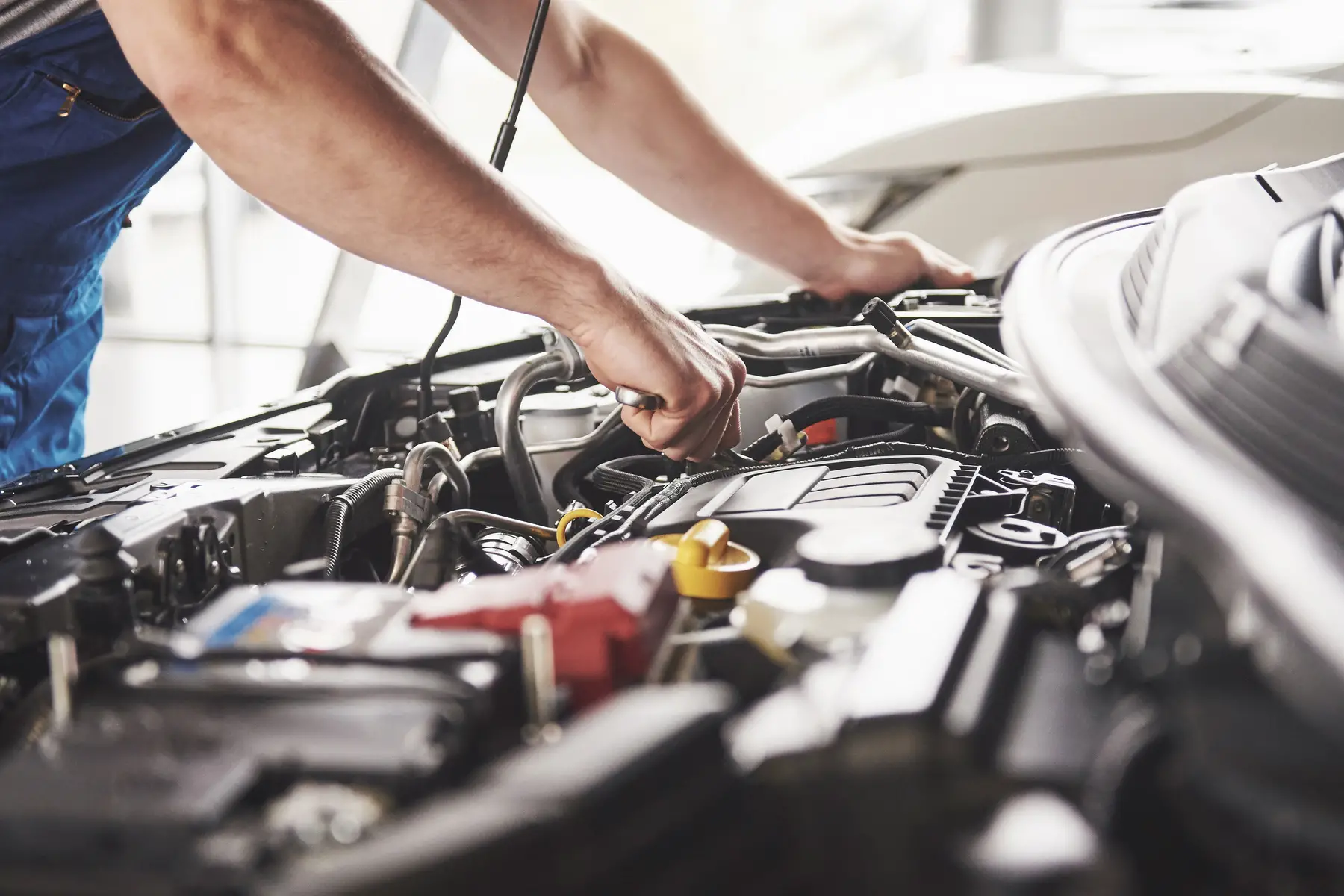
If you plan to import your car to Austria from another EU country, it must first undergo a roadworthiness test in your former country of residence. Once you arrive in Austria, you can use the foreign number plates for up to one month. After this, you must register the car in Austria and get local plates.
Driving costs in Austria
As in any other country, driving in Austria comes with a host of related costs. Of course, the main cost is the car itself. But, you should remember that there are regular costs that you will have to pay on top of this. These include:
- Vehicle registration and licensing: €200
- Car tax: 20%
- Insurance: €60–€150/month
- Tolls and congestion charges: €90/year (for a vignette that covers all this)
- Parking costs: €5–€20/day
- Inspections and maintenance: up to €5,000/year
- Fuel: €1.45/liter (gasoline), €1.37/liter (diesel)
Driving rules and penalties in Austria
Like in any other country, Austria has many road rules. As such, if you are driving there, you should obey these rules as closely as possible. Otherwise, you could end up with heavy fines and penalties if you breach them.
General road rules in Austria
While driving in Austria, you will need to follow the country’s strict road rules. Here are some of the most important ones you should be aware of:
- Keep your registration papers and driver’s license in the car
- Drive on the right and overtake on the left
- Use indicators for overtaking or changing lanes
- All drivers and passengers must wear seat belts
- Maintain a distance of at least 20 meters behind rail vehicles
- Maintain safety distances between cars (generally 7 to 14 meters)
- Mobile phones can only be used with a hands-free car kit
- Carry suitable warning signs, reflective clothing, and a first aid kit in case of accidents
- Use winter tires (or snow chains) between 1 November and 15 April
Because Austria takes its road rules seriously, there are serious penalties in place for violations. For example, failure to comply with safety distances can result in fines, demerit points, and even suspension of your license. However, if you are just looking at fines, here are some of the most common ones:
- Speeding: €30–€150
- Mobile phone use: up to €75
- Running a red light: €70
- Violation of overtaking ban: €40
- Crossing a solid line: €40
- Parking violation: €20
- Driving without a seat belt: €50
- Driving under the influence: €300–€1,600
- No winter tires/snow chains: from €35
Speed limits in Austria
While driving in Austria, you should be careful to follow the local speed limits. However, these are very similar to those in other European countries, so chances are you may already be familiar with them. Nonetheless, here are some of the speed limits you should be aware of:
- Residential/urban areas: 50km/h unless posted otherwise
- Freeways (Bundesstraße): 100km/h
- Highways (Autobahn): 130km/h
In Austria, speeding violations come with fines and possibly a license suspension. However, these vary depending on how much you exceed the speed limits. Austria uses many of the same methods that other countries have in place to catch speeding cars. This includes traffic cameras and police patrols.
Driving under the influence in Austria
In Austria, driving under the influence of alcohol or drugs will see you reap severe punishments. The maximum permissible blood alcohol level for driving is 0.05% so if you are over this limit, you will face fines and could lose your license. In addition, new drivers who have had a license for less than two years are subject to a lower limit of 0.01%. The exact fine and license suspension period will depend on your actual blood alcohol level on testing, as follows:
- 0.05%–0.08%: from €300 and driving disqualification
- 0.08%–0.12%: from €800 and license suspension for at least one month
- 0.12%–0.16%: from €1,200 and license suspension for at least four months
- Over 0.16%: from €1,600 and license suspension for at least six months
Driving without a license in Austria
You must have a valid driver’s license to drive in Austria. However, depending on your situation, this could be a local or a foreign license. If you don’t have a valid license, though, you may face a hefty fine.
Road signs in Austria
When driving in Austria, you should have at least a basic understanding of local road signs. In Austria, road signs are usually placed on the right. However, this could be next to the road or above it, depending on where you are. In some cases, signs may also be placed on both sides of the road.
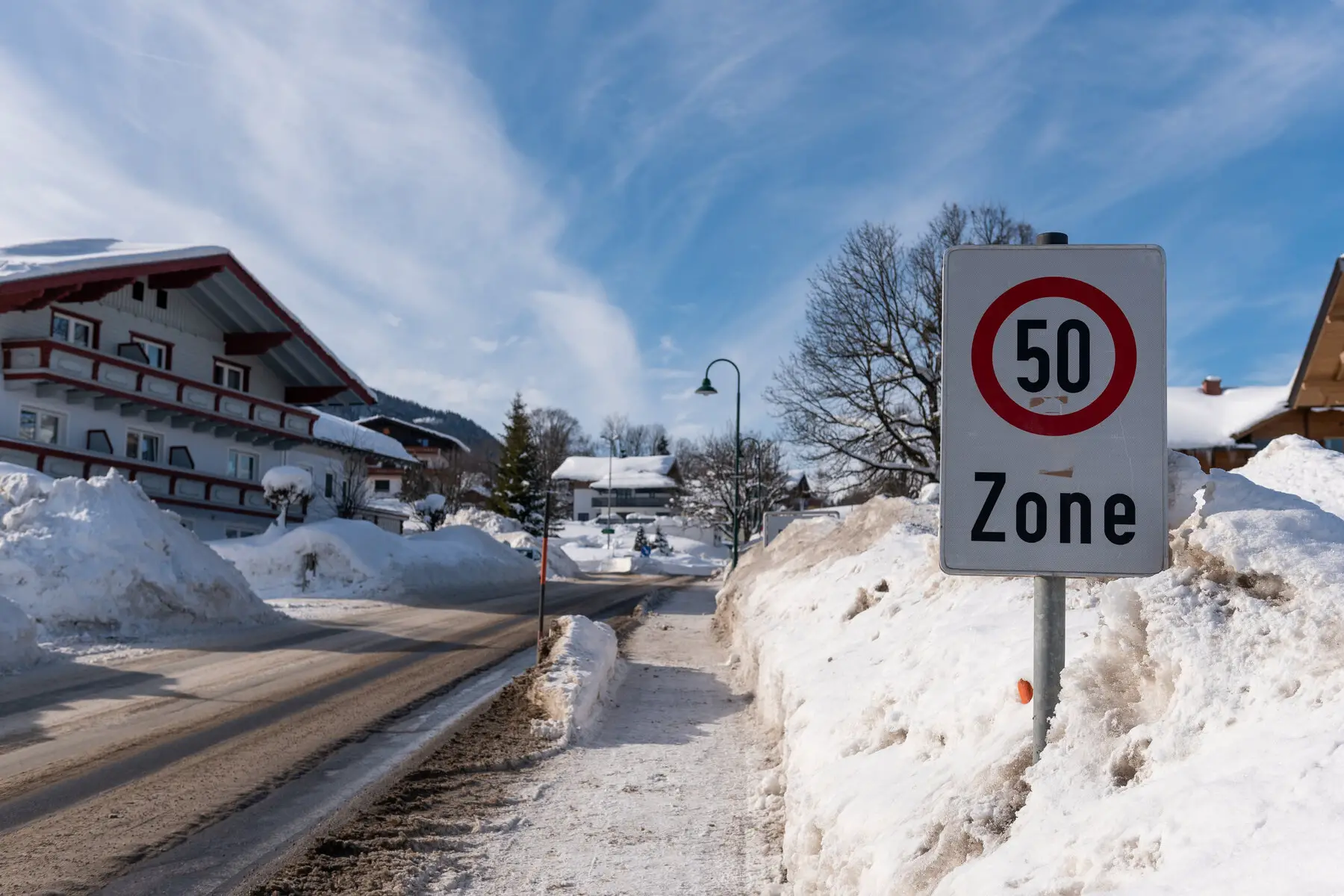
Generally, signs for warnings or prohibitions have white backgrounds and red ages. This is similar to the rest of Europe. For the most part, you will recognize familiar signs for roundabout ahead, road curves, slippery road surface, pedestrian crossing, and stop. In addition, signs for speed limits or lanes and directions will be easy to see and understand.
Traffic information in Austria
When driving in Austria, you can expect to find the most traffic in Vienna and the main urban centers. However, once you get outside this area, there is far less traffic. In addition, there may be a little traffic on popular mountain roads, as these tend to be smaller and trickier to navigate. If you need up-to-date traffic information, the best place to look is ASFiNAG, which has a website and app that offers live-cam views of road conditions and plenty of advice and information.
Parking in Austria
Vienna has plenty of short-stay parking zones. As such, you can usually find somewhere to park your car for a few hours without any trouble. However, you should keep an eye out for parking zone signs, which are only posted at the entrance to each district. Also, be aware that different rules apply for residential spaces and the main shopping streets.
When parking in a short-term zone, you will need to pay for a parking ticket. You can buy these from tobacco shops, cigarette machines, gas stations, Wiener Linien ticket offices or machines, and the Handyparken app. Parking usually costs €1.10 for 30 minutes. In addition, Vienna has plenty of Park & Ride Garages which charge about €3.60 a day. Most areas of Austria follow similar setups for parking.
In Vienna – and the rest of Austria – you can get different types of tickets for parking violations. As such, you will have to look at your ticket to find exactly what your offense is, how much your fine is, and how to pay it. This is because the back of your ticket will have your specific traffic offense, along with the contact information of where to pay your fine; the front of the ticket will show your fine.
Road accidents and breakdowns
No matter where you are, driving can sometimes result in accidents and breakdowns. If this happens, you should know exactly what to do. This section explains how to deal with accidents and breakdowns in Austria.
Road accidents in Austria
In 2018, there were a total of 35,736 road traffic accidents in Austria. However, this fell by 3% in 2019. As such, it would be useful to have Austria’s emergency numbers at hand when you are driving in Austria. It is also essential to have insurance for your car.
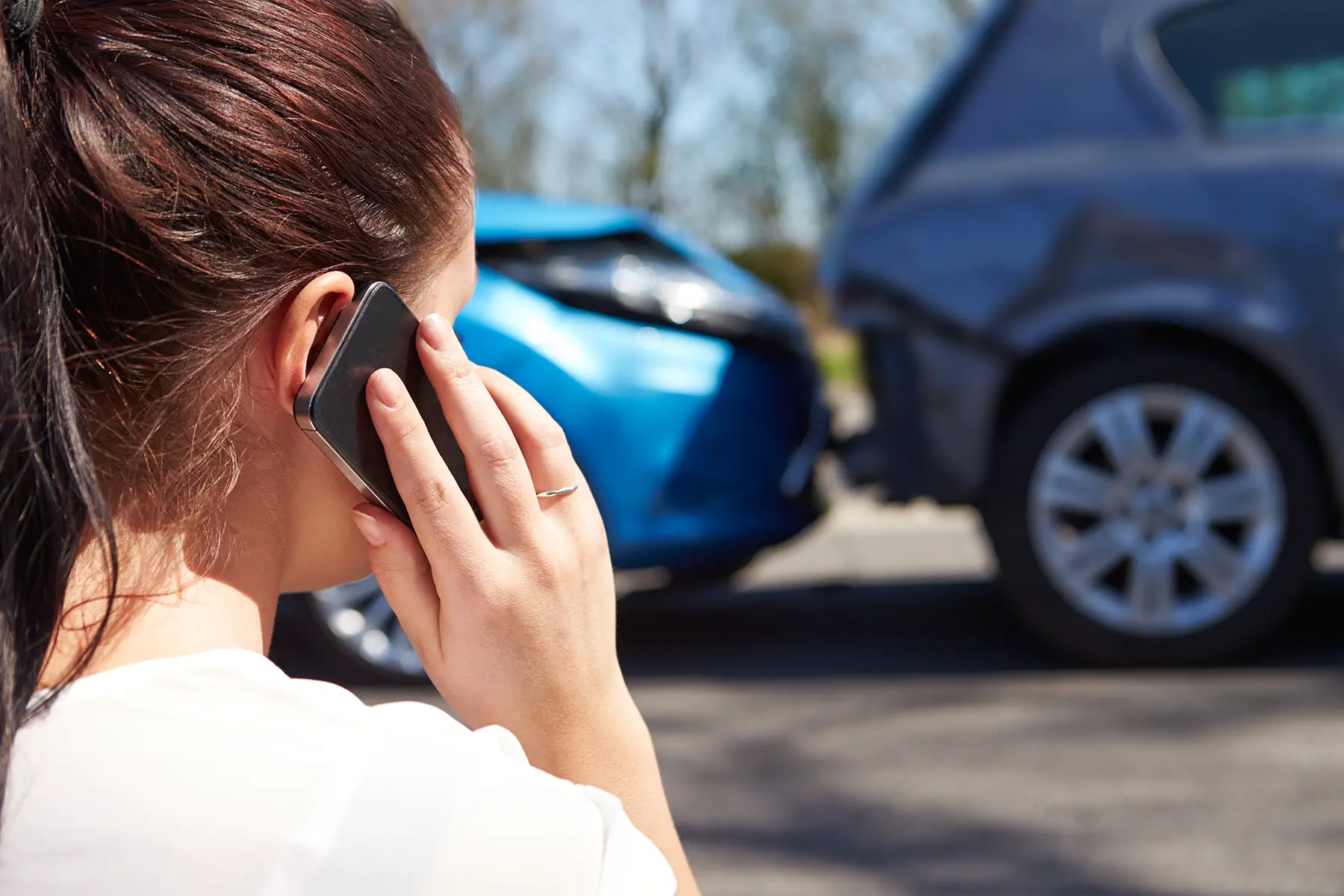
Nevertheless, should you get into an accident while driving, there are a few protocols you must follow. If there are any injuries, you should call the police and emergency medical services straight away. However, if there is only material damage, this is not necessary. Instead, you should fill in the European Accident Statement and exchange name and contact details. In addition, you should take note of any available witnesses, the date and place of the accident, and create a description of the accident along with photos.
Vehicle breakdowns in Austria
In Austria, the ÖAMTC deals with all incidents on Austrian roads. This includes breakdowns and other emergencies. Therefore, in the event of a breakdown, you should call 120 to contact the organization. In addition, you can also contact the ARBÖ, which is a membership service much like AAA in the US.
Cars in Austria
In Austria, there is a strong preference for driving European cars. In fact, the most popular cars in the country include models by Volkswagen (Golf, Polo, Tiguan), Skoda (Octavia), and Renault (Clio).

Whichever car you choose, you will need to ensure it is properly registered and has the right license plates. In general, Austrian plates use an alphanumeric format. This includes one or two letters indicating the district the car is registered, the heraldic emblem of the registered federal state, and finally, a sequence of three to six letters and numbers. In addition, no Austrian license plate uses the letter Q.
Importing a car in Austria
You may want to import a car into Austria, especially if you already have one in an EU member state. Although it is a bit of a process, this is entirely possible. Here is what you should know:
- A distinction is made between second-hand and new cars for tax and customs purposes. As such, cars with less than 6,000km on them are new, while those with more than 6,000km on them are used.
- In the case of a used car, or if you buy one from a dealer, you should have it checked by an independent body to ensure it meets all local regulations.
- You must have a purchase contract or balanced invoice that includes VAT or a reference to differential taxation.
- Several documents should be included, including the EEC Certificate of Conformity, registration certificates, and operating permits.
- The car must go through a technical inspection to confirm roadworthiness.
- When buying a car in a third country, you will also need a declaration from the trader and customs declarations.
- It is advisable to have a foreign transfer license plate and a short-term insurance policy.
- You will have to register your imported car in Austria within a month of importing it.
- Several fees and taxes must be paid, including standard consumption tax, VAT, import sales tax, customs duty, and cost of registration and licensing.
Buying a car in Austria
If you want to buy a car in Austria, the process is quite similar to what you would go through in other countries. In general, you should:
- Have the car checked by an independent expert (for second-hand cars)
- Get a contract of sale or sales invoice
- Register the car or get a transfer or registration
- Get a European Certificate of Conformity (from the seller or the importer of the car brand)
Renting a car in Austria
Because Austria has such a great public transport system, many urban residents prefer to hire a car when they need it. As such, there are many car rental agencies in Austria, including big names like Hertz, Sixt, Europcar, and Avis. To rent a car, you have to be at least 18 years old and have held your license for a year. In addition, an international license is required if you are using a foreign license.

On average, the cost of a rental car in Austria is €50 a day. However, you may incur extra charges for insurance, GPS rental, or for drivers under 25 years of age.
Selling a car in Austria
Just like buying one, selling a car in Austria follows a pretty standard process. In general, you will either sell to a dealer or list your car on a website. Once you have interested buyers, you can expect them to want to come by and check out the car for themselves and organize an inspection. They will probably also want to see registration documents and roadworthiness certificates. Then, if they decide to buy the car, you will need to create a contract of sale or sale invoice. After this, it is the responsibility of the buyer to transfer the car’s registration to their name.
Carpooling and car sharing in Austria
Being a rather eco-friendly country, carpooling and car shares are quite popular in Austria. In fact, there are many companies that allow residents to rent cars by the hour with no paperwork. These rentals also usually offer far lower fees than regular car rental agencies.
One such company is Share Now. To use this car-sharing company, you just have to download the app to your phone and upload your valid driver’s license. You can then have access to Share Now’s fleet of share cars, which are located throughout the country. But, of course, they are most prevalent in bigger cities. Additionally, Share Now gives users the option of minute rates (from €0.26/minute, up to two hours) and hourly rates (from €16.99 for two hours, plus €0.19/km after this), and daily rates (€28.99/day plus €0.19/km after this).
Electric cars and hybrids in Austria
Another legacy of Austria’s commitment to environmentally-friendly measures and public transport is the presence of electric cars. Over 33,000 were registered in Austria by the end of May 2019, although this only makes up 0.7% of the total number of cars in the country. Additionally, nearly two-thirds of these are commercial vehicles. Furthermore, sales of plug-in electric cars increased by nearly 35% year-over-year during the first six months of 2019; reaching a total of nearly 6,000. In addition, the government is encouraging residents to buy electric cars by offering a €5,000 incentive.
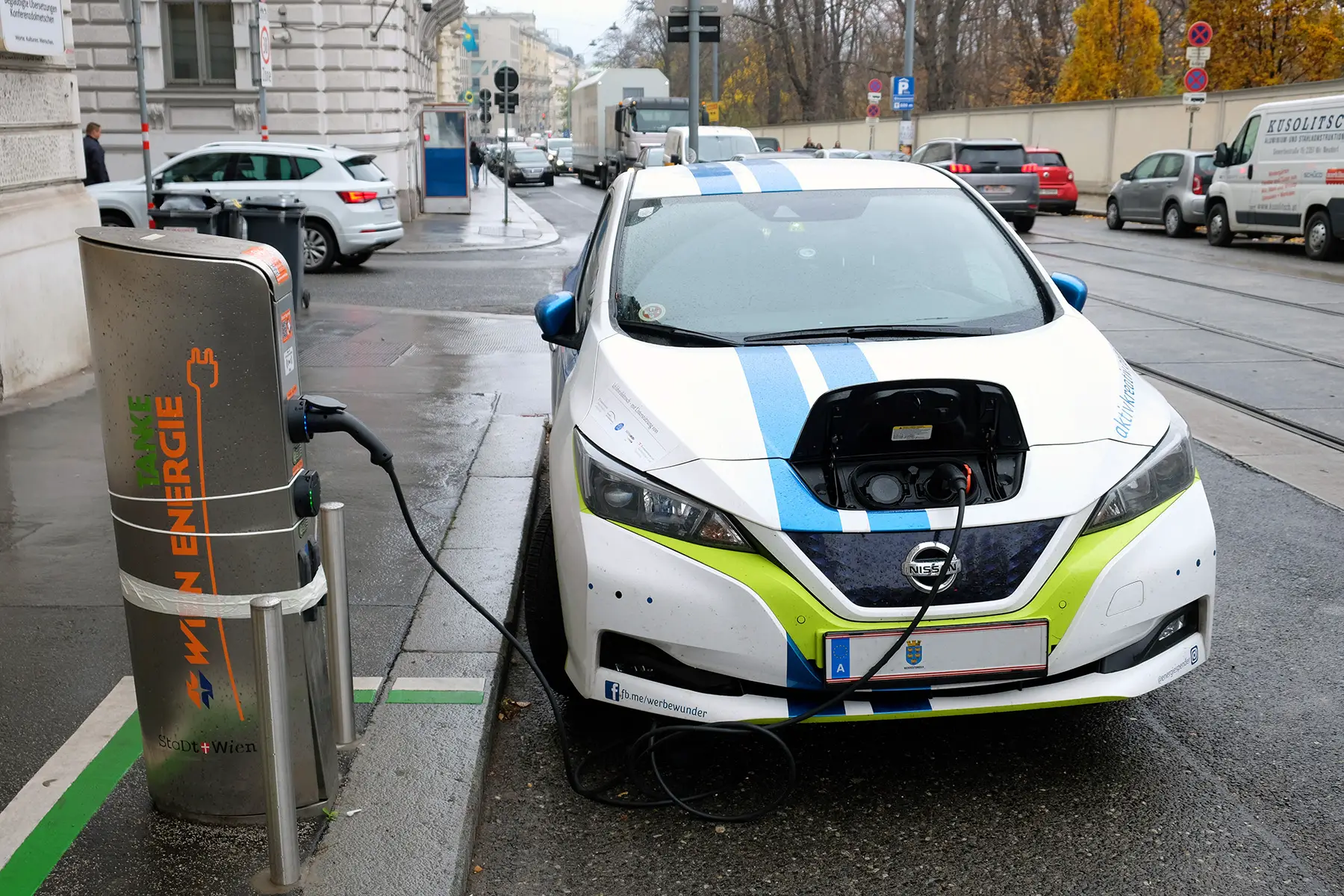
The most popular electric or hybrid cars in the country are the Tesla Model 3, BMW i3, and Renault ZOE. As such, you can usually buy an electric car from the big car brands in Austria.
Car repairs in Austria
In general, car repairs will be done at your local auto garage. However, some Austrians prefer to take their car directly to a garage run by their car company. For example, BMW has its own garages and these have more experience in dealing with any issues that crop up in BMW cars.
Conversely, some people might prefer to take their car to a garage that specializes in the type of repair they need. For example, if you have a windshield issue, you could go to an auto glass repair shop. Similarly, if you need to replace your tires, you might go directly to a tire shop.
Useful resources
- EU Driver’s License Europa – page discussing driver’s licenses in Austria
- Driving rules on oesterreich.gv.at – government site about road rules in Austria
- Licensing regulations on oesterreich.gv.at – government site about driver’s licenses in Austria
- Car Registration Europa – page discussing car registrations in the EU
- ASFiNAG – Austrian traffic and road organization
- City of Vienna – government page about Vienna parking fines
- City of Vienna – government page about driving licenses in Vienna
- City of Vienna – government page about cars in Vienna
- OAMTC – road traffic and breakdown service
- ARBÖ – car breakdown membership service
